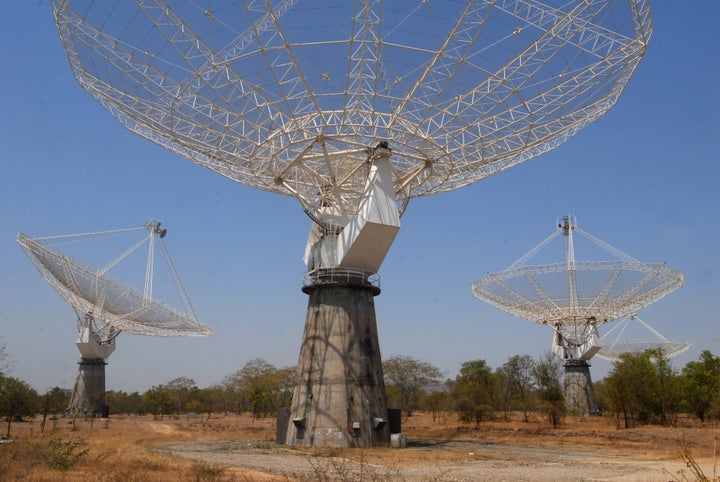
Researchers have just caught onto a radio signal which has come from deeper depths of the universe than we’ve ever recorded before.
That means it’s more than eight billion years old.
That’s right – a signal from the most distant galaxy ever recorded was detected this month by a huge radio telescope in India, called the Giant Metrewave Radio Telescope (GMRT).
Obviously the further away a galaxy is, the harder it is for telescopes to pick up signals.
But researchers in Canada and India have caught the radio signal at a specific wavelength (called 21cm line), meaning they have heard the sound of this particular galaxy for the first time.
It means that scientists might now be able to understand how stars form in far-away galaxies.
Arnab Chakraborty, from Montreal’s McGill University, explained: “A galaxy emits different kinds of radio signals.
“Until now, it’s only been possible to capture this particular signal from a galaxy nearby, limiting our knowledge to those galaxies closer to Earth.
“But thanks to the help of a naturally occurring phenomenon called gravitational lensing, we can capture a faint signal from a record-breaking distance.
“This will help us understand the composition of galaxies at much greater distances from Earth.”
The astronomers have now found that the atomic mass of the gas contents of this galaxy was almost twice the mass of stars visible to Earth.
The signal was detected through “gravitational lensing”, where waves are “bent” by large objects between the galaxy and the Earth’s telescopes.
This then magnifies them, so they can be detected.
This signal in particular was from a galaxy which was 4.9 billion years old, meaning it’s the equivalent of “a look-back in time of 8.8 billion years”.
As co-author of the report, Nirupam Roy, said: “Gravitational lensing magnifies the signal coming form a distant object to help us peer into the early universe.”
It means scientists will be able to see how parts of space evolved.

